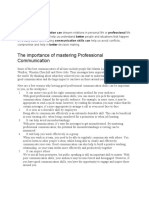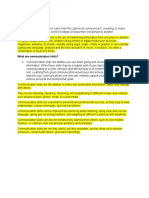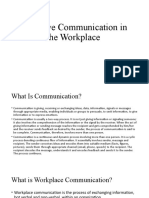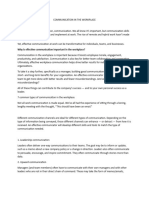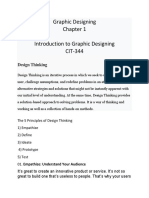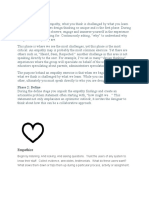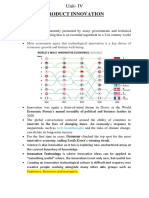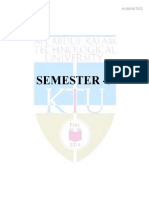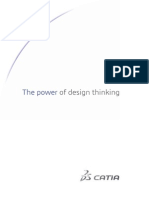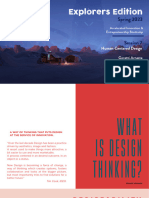0% found this document useful (0 votes)
15 views17 pagesModule 3 Notes
The document covers the importance of effective communication skills, outlining various methods of communication and tips for improvement, such as active listening and body language. It emphasizes how strong communication skills are crucial for career success and can prevent misunderstandings in the workplace. Additionally, it discusses the significance of collaboration and teamwork, as well as the role of design thinking in problem-solving and innovation.
Uploaded by
nick.280923Copyright
© © All Rights Reserved
We take content rights seriously. If you suspect this is your content, claim it here.
Available Formats
Download as PDF, TXT or read online on Scribd
0% found this document useful (0 votes)
15 views17 pagesModule 3 Notes
The document covers the importance of effective communication skills, outlining various methods of communication and tips for improvement, such as active listening and body language. It emphasizes how strong communication skills are crucial for career success and can prevent misunderstandings in the workplace. Additionally, it discusses the significance of collaboration and teamwork, as well as the role of design thinking in problem-solving and innovation.
Uploaded by
nick.280923Copyright
© © All Rights Reserved
We take content rights seriously. If you suspect this is your content, claim it here.
Available Formats
Download as PDF, TXT or read online on Scribd
/ 17














